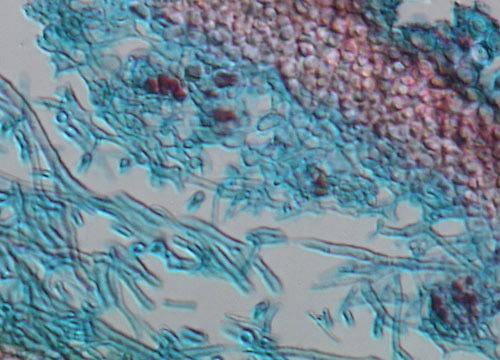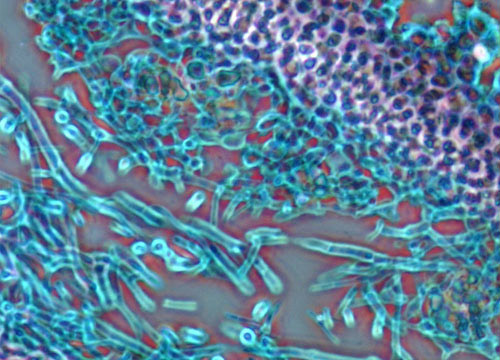Lichen Thallus
The classification of lichens has been tremendously problematic for taxonomists. Once thought to be a single organism, microscopy revealed that lichens are a structure composed from a symbiotic relationship between two distinct organisms, fungi and algae. Although each individual species can flourish independently, in certain harsh environments they must work together in a mutually beneficial relationship in order to endure.
 DIC
DIC
 Phase
Phase
Phase
Certain characteristics make algae and fungi extremely useful to each other. Algae form simple carbohydrates that are excreted and subsequently absorbed and transformed by fungi cells. Algae also produce several vitamins that are required by fungi. In return, fungi absorb water vapor from the air and provide shade for the algae, which are very sensitive to light. Working together in such ways enables lichens to colonize extremely inhospitable areas, including bare rock, solidified lava flows, and regions at temperature extremes.
DIC
Fungi and algae retain their individual genetic make-up even in symbiosis, but the composite body they form is known as a thallus. The shape and appearance of lichens is dependent on the species of fungi present, not the algae. Lichens grow relatively slowly and their propagation is unclear. Scientists generally agree, however, that the most frequent kind of lichen reproduction is vegetative, a portion of an existing lichen breaking away and starting a new growth in an adjacent area.















